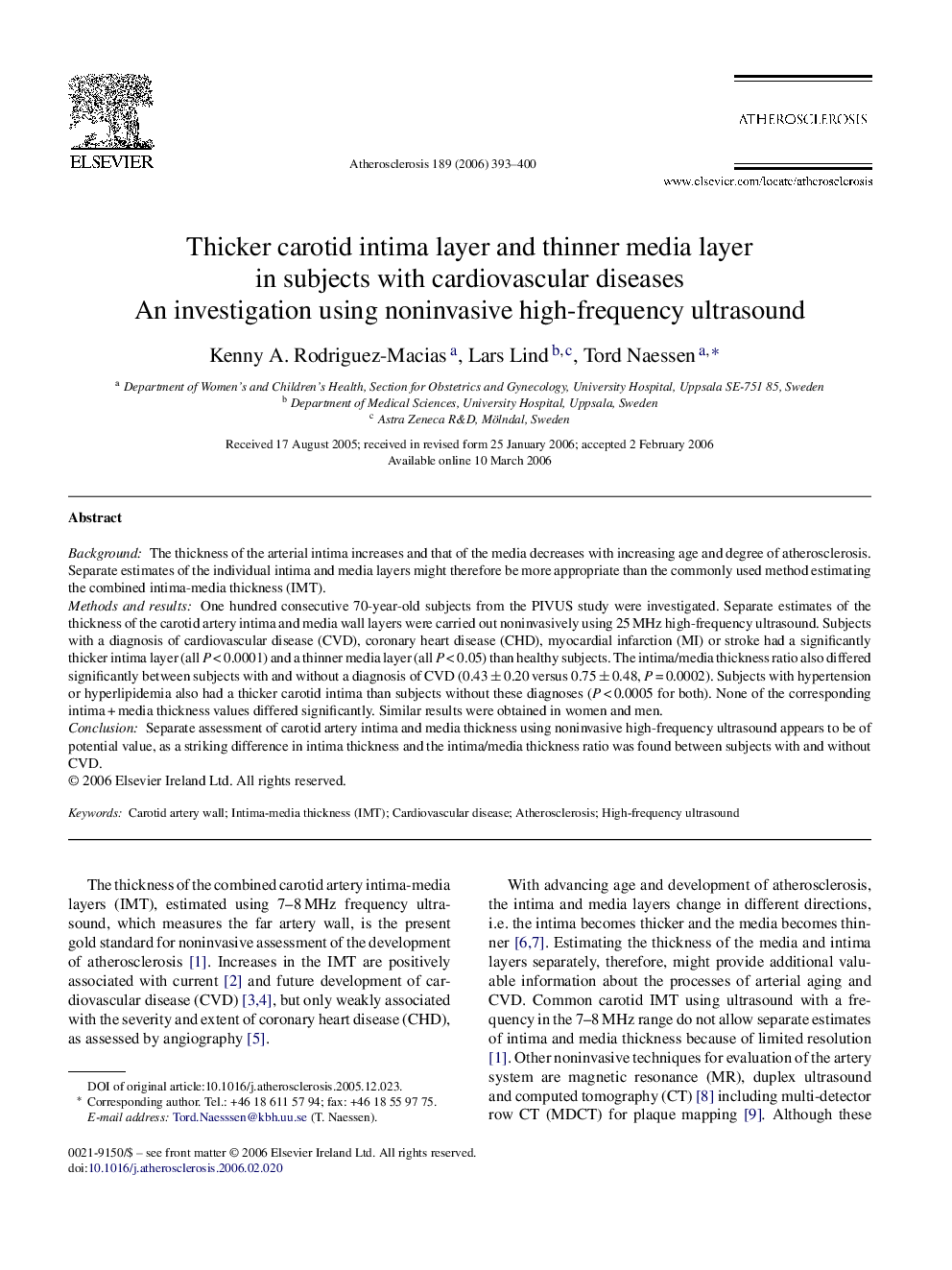| Article ID | Journal | Published Year | Pages | File Type |
|---|---|---|---|---|
| 2895003 | Atherosclerosis | 2006 | 8 Pages |
BackgroundThe thickness of the arterial intima increases and that of the media decreases with increasing age and degree of atherosclerosis. Separate estimates of the individual intima and media layers might therefore be more appropriate than the commonly used method estimating the combined intima-media thickness (IMT).Methods and resultsOne hundred consecutive 70-year-old subjects from the PIVUS study were investigated. Separate estimates of the thickness of the carotid artery intima and media wall layers were carried out noninvasively using 25 MHz high-frequency ultrasound. Subjects with a diagnosis of cardiovascular disease (CVD), coronary heart disease (CHD), myocardial infarction (MI) or stroke had a significantly thicker intima layer (all P < 0.0001) and a thinner media layer (all P < 0.05) than healthy subjects. The intima/media thickness ratio also differed significantly between subjects with and without a diagnosis of CVD (0.43 ± 0.20 versus 0.75 ± 0.48, P = 0.0002). Subjects with hypertension or hyperlipidemia also had a thicker carotid intima than subjects without these diagnoses (P < 0.0005 for both). None of the corresponding intima + media thickness values differed significantly. Similar results were obtained in women and men.ConclusionSeparate assessment of carotid artery intima and media thickness using noninvasive high-frequency ultrasound appears to be of potential value, as a striking difference in intima thickness and the intima/media thickness ratio was found between subjects with and without CVD.
